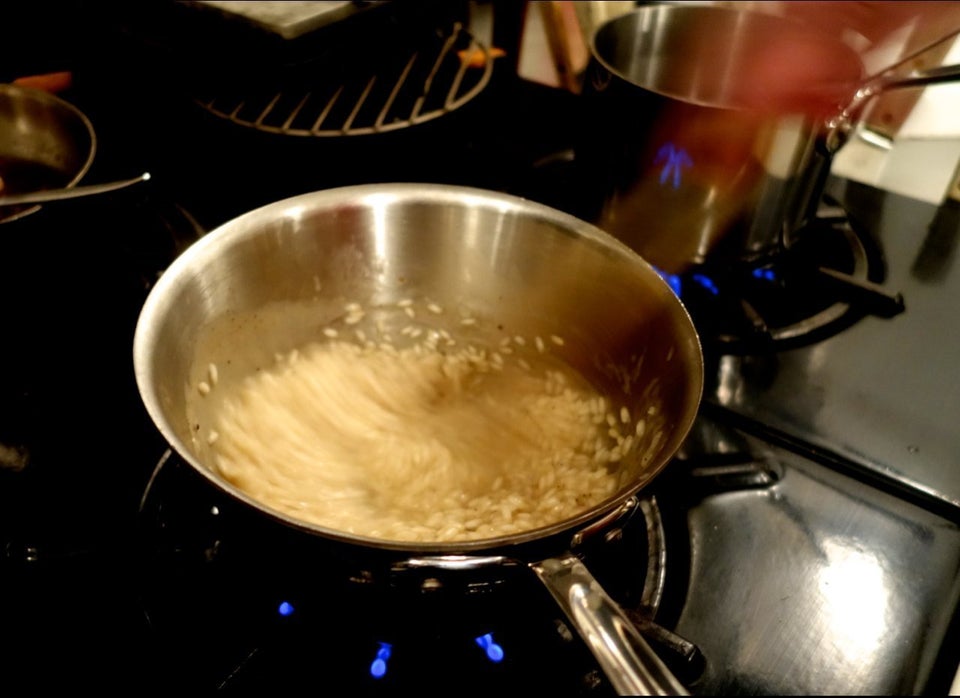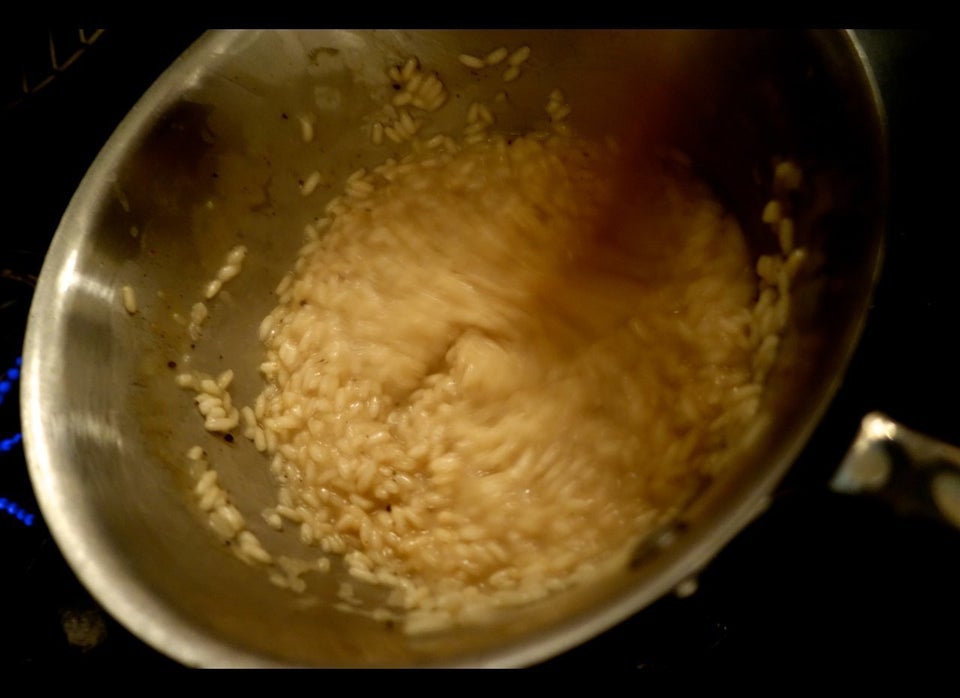I've been making risotto for decades and have written about it for years. In general, my risottos have tasted good, and Jackie and I -- and our guests -- have enjoyed them. But there was one element of a perfect risotto that sometimes eluded me: its creaminess and the way the rice grains are integrated into their self-generated sauce, not merely surrounded by it. Sometimes I'd nail it, sometimes not.
This inconsistency has disappeared since a recent visit to Venice's Rialto market and a cooking lesson in the engaging company of Daniele Turco, executive chef of the gorgeous Gritti Palace hotel. (Over at Huffington Post Travel, I'll soon be writing about our experience with the hotel's cooking school -- it was terrific.)
What has changed? The main thing was seeing the speed and vigor with which Mr. Turco stirred his risotto (made, incidentally, with the tiny artichokes that come to Venice even in November). In his On Food and Cooking, Harold McGee explains that risotto's creamy consistency comes in large part from constant stirring: put simply, this rubs the starch off the rice grains' surface as it softens in the hot liquid, and that starch creates a thickened sauce. (Yes, there are no-stir risotto recipes, and I've tried one or two, but they don't yield anything like the ideal.)
I'd always stirred my risottos, but it turns out I'd been doing so in comparatively slow motion. Mr. Turco's stirring was rapid and strong, and I can tell you that for the perfect creamy risotto you need to hear the splish-splash sound of rice and liquid slamming around the pan. Since we were in Venice at the time, let's say it sounds like the splashing of a gondolier's oar, but revved up to racing speed. Adopting this technique, you may find that you need more liquid (vegetable stock is almost always the right choice) than you would with gentler stirring: again, let your ears guide you in deciding when and how much to moisten the rice.
Oh, yes: the pan. For a small risotto (say, 2/3 cup -- 160 ml by volume -- of rice, enough for two as a main dish and four as a light starter), you need to create critical mass so that the ingredients can rub up against each other and against the sides of the pan as you stir. To do this, a pan with a smaller diameter and higher sides is preferable to a broader, shallower one. I was also reminded of the importance of one step I neglect if I'm in a hurry or am being inattentive: letting the cooked risotto rest, loosely covered, for two or three minutes before finishing it by adjusting the consistency with stock and beating in (again, vigorously) butter and cheese, or whatever other final ingredients are right for your particular recipe.
With this single, simple enhancement -- stirring harder and faster -- you will find your risottos gaining the perfect consistency that is too often missing, even in restaurants.



